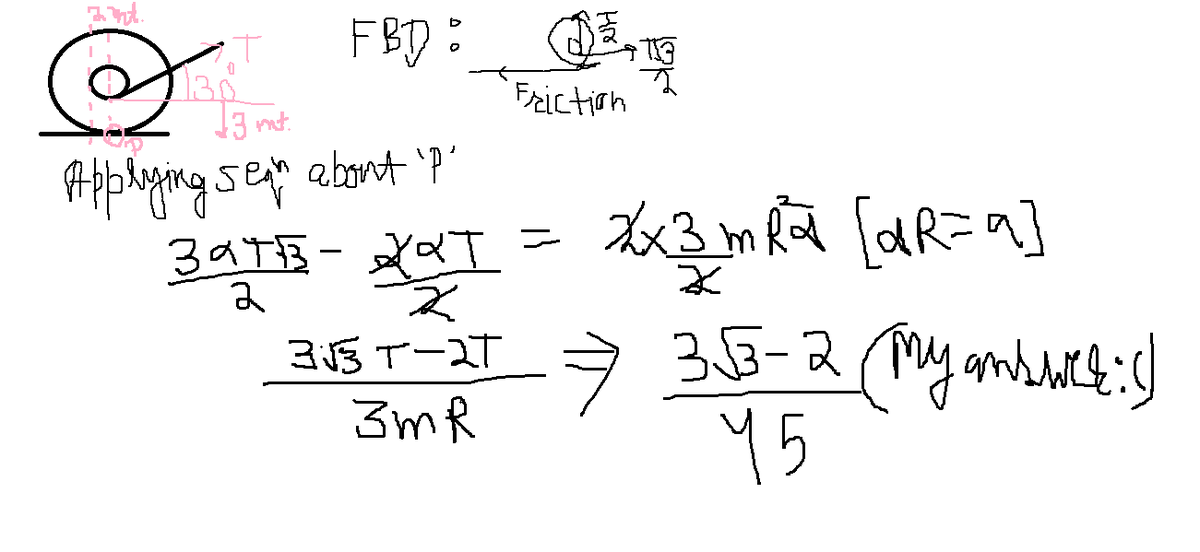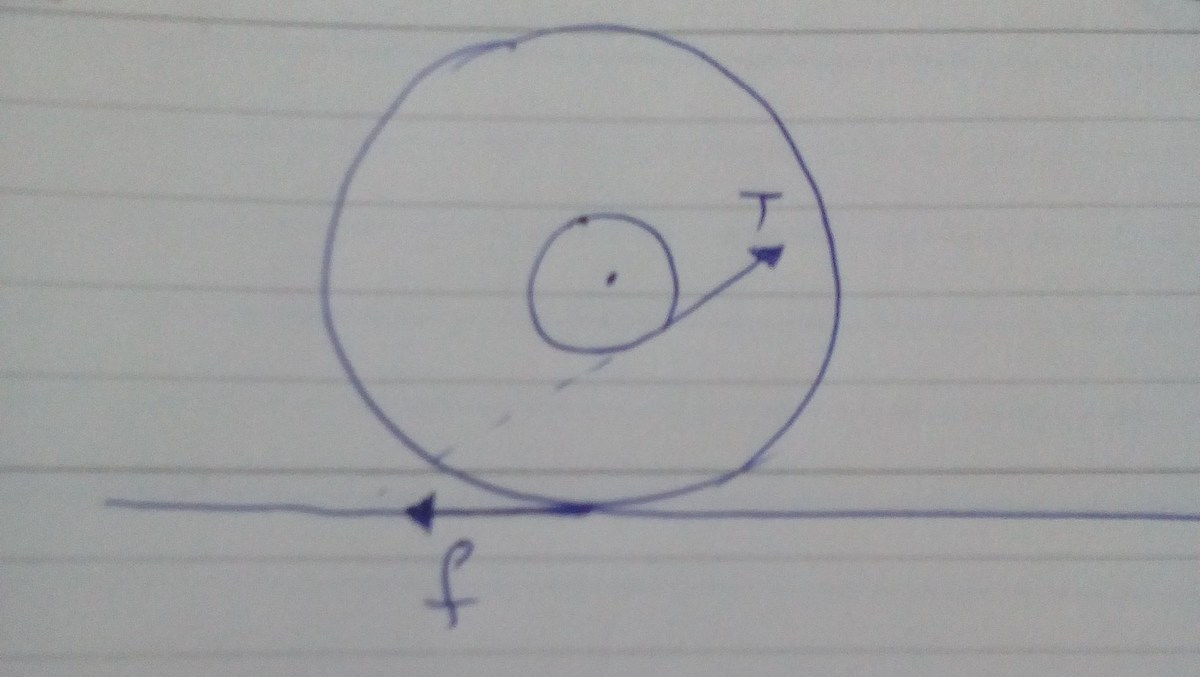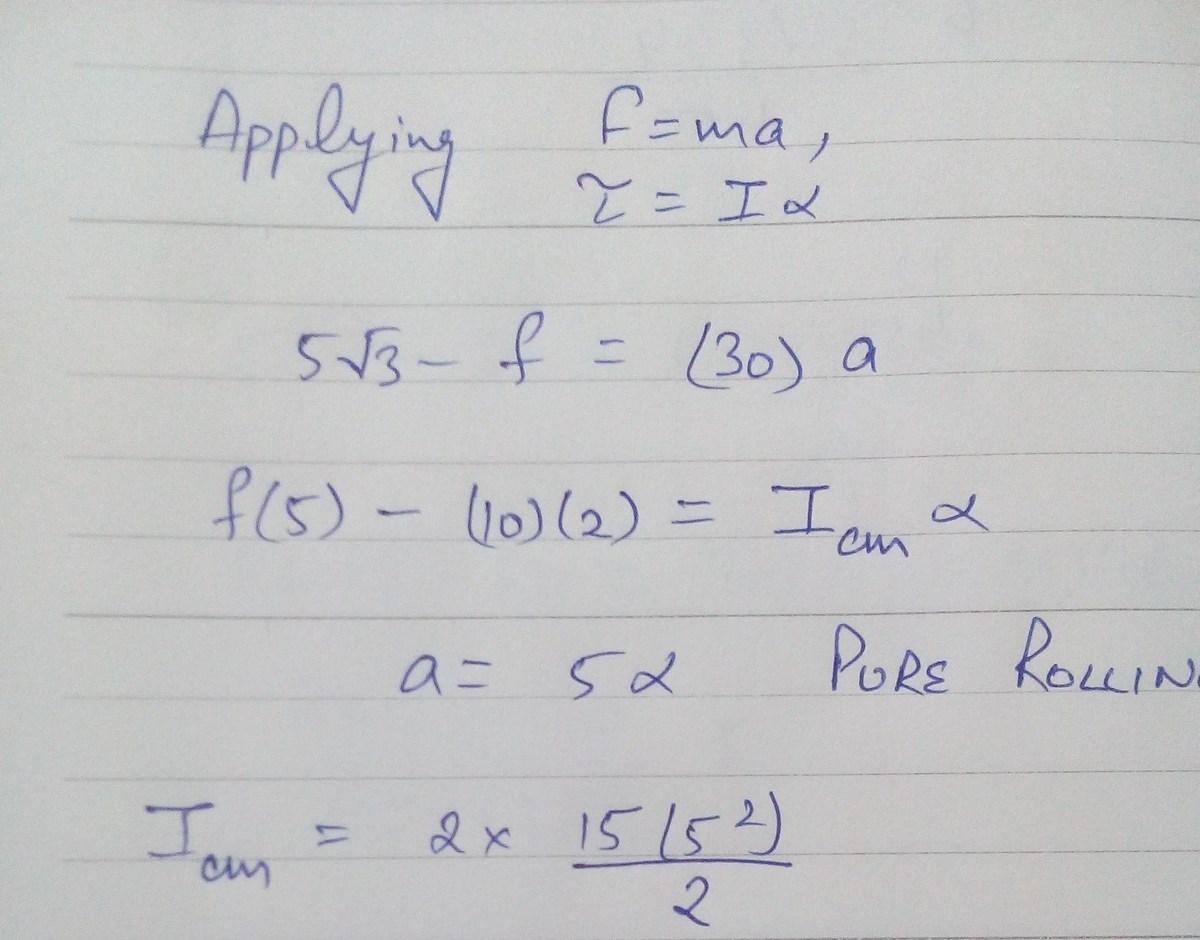That's one huge yo-yo!
In an alien planet, an alien wants to play yo-yo. The gigantic yo-yo consists of two solid disks, each of mass and radius , connected by a central spindle of radius and negligible mass. A string is coiled around the central spindle. The yo-yo then is placed upright on a rough flat surface and the string is pulled gently with a tension of at an angle to the horizontal. The pull is gentle enough to ensure that that yo-yo does not slip nor lifts off the ground.
The acceleration of the center of mass of the yo-yo can be expressed in the form . Where is as large as possible, and =1. What is the value of ?
- Assume that the only difference between the planet and earth is the size of the inhabitants and the planets, nothing else.
The answer is 57.
This section requires Javascript.
You are seeing this because something didn't load right. We suggest you, (a) try
refreshing the page, (b) enabling javascript if it is disabled on your browser and,
finally, (c)
loading the
non-javascript version of this page
. We're sorry about the hassle.



This problem is quite tricky because you have to account for the rotational and linear motions. I've solved a simpler problem involving pulling a hockey puck (only one radius and disk).
For the rotational motion, we begin with the torque of the system. If we were to draw a free-body diagram, the large radius is tangential to the force of friction D (D for dissipative) while the small radius is tangential to the tension of the string. Since we have two solid disks, the moment of inertia I is M R 2 . Hence the total torque can be summed up as: R D − r T = M R 2 α = M R a or D − R r T = M a .
For the linear motion, we derive the net force T c o s ( 3 0 ) − D = 2 M a .
Substituting the value of Ma from the linear motion to the rotational motion D − R r T = 2 T c o s ( 3 0 ) − D
which can be rearranged as: D = 3 T ( c o s ( 3 0 ) + R 2 r ) .
Now we substitute this equation for D, and isolate the acceleration we arrive at the final equation: a = 3 M T ( c o s ( 3 0 ) − R r ) .
I also noticed an error with the question. The gcd(a,d) = 5.